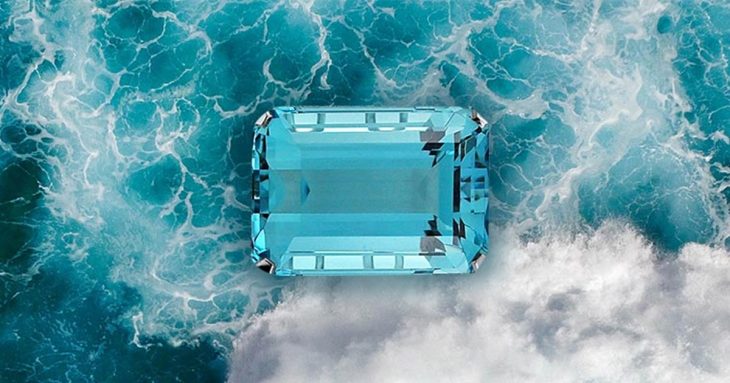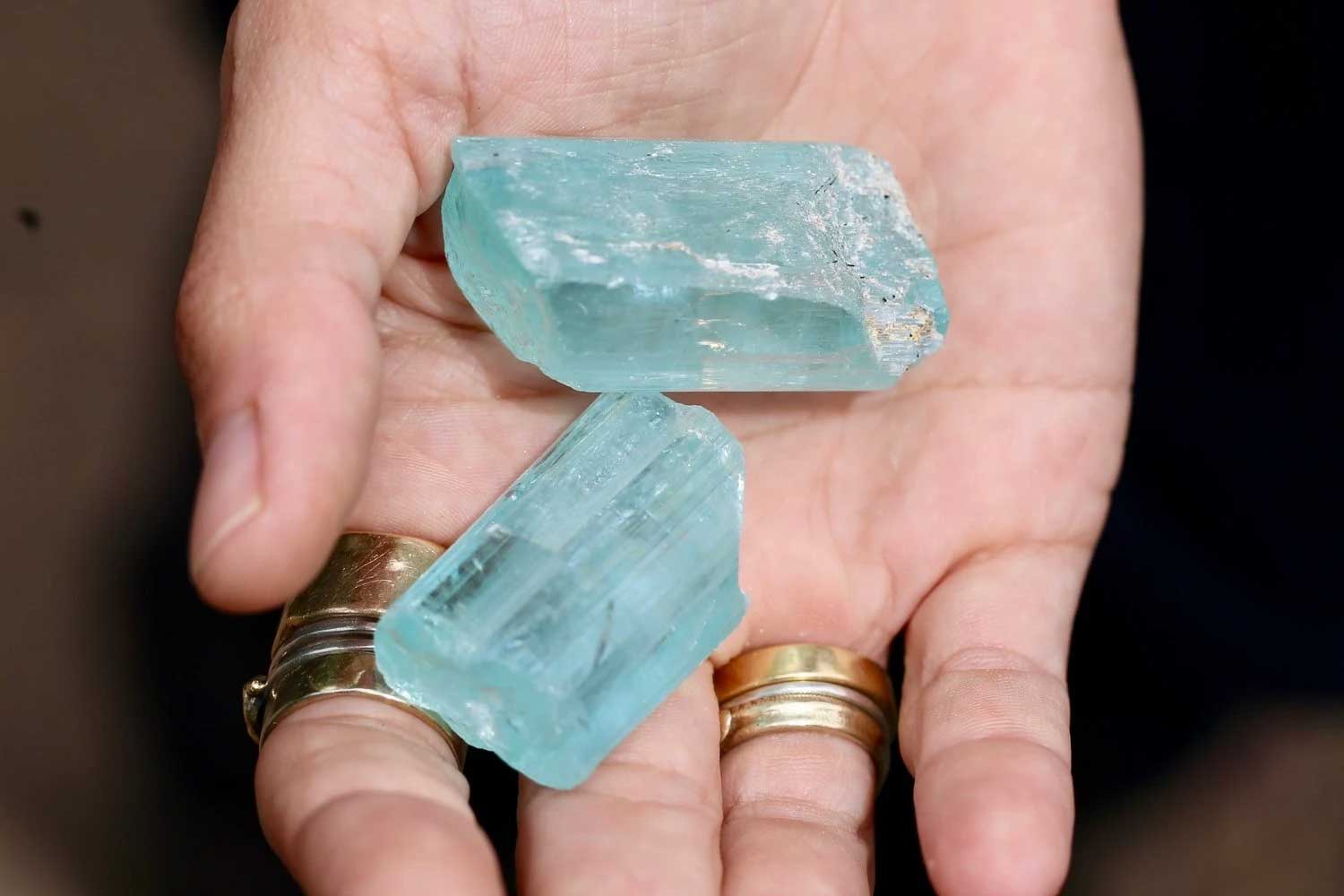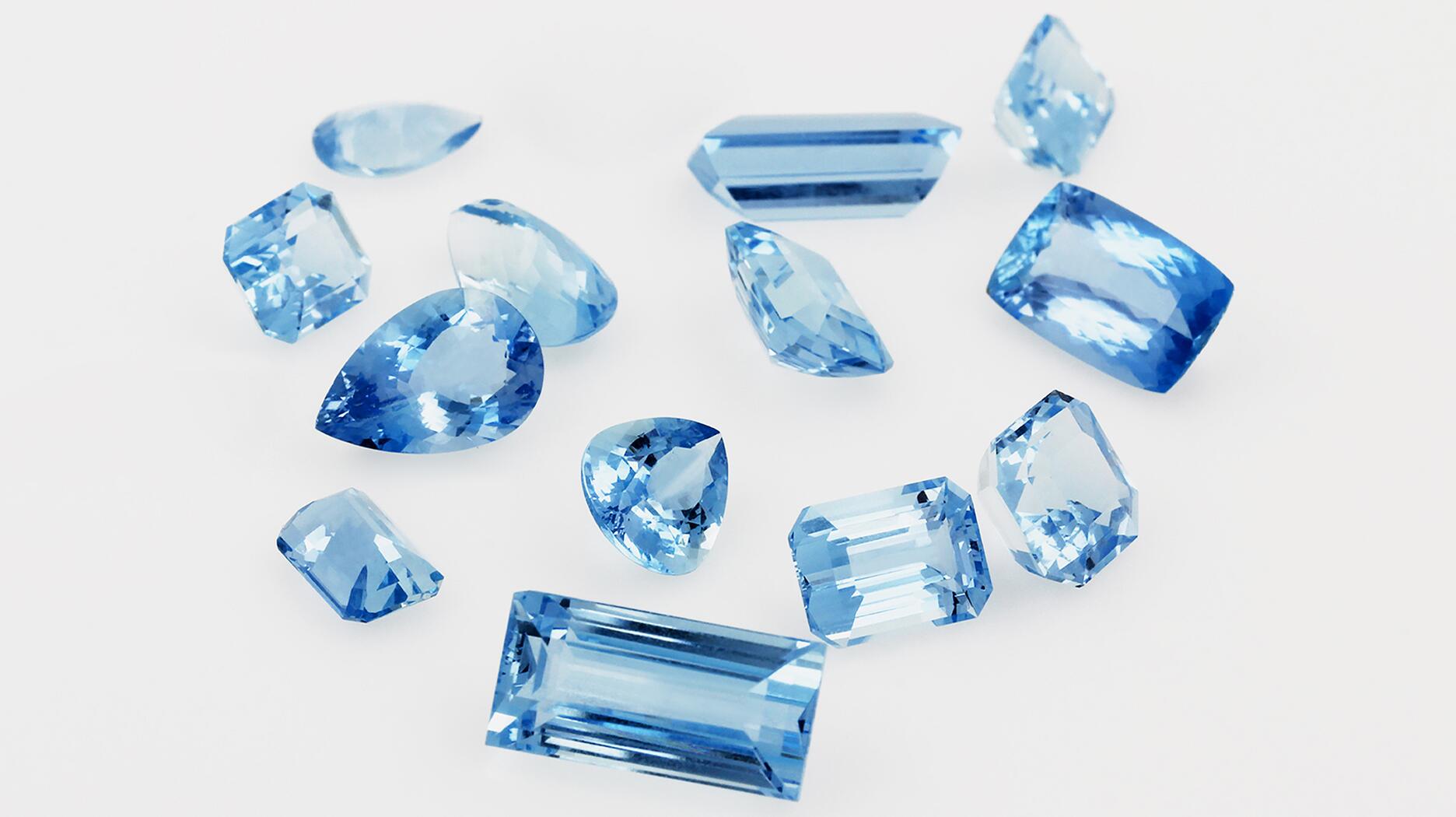
The mesmerizing aquamarine gemstone has long captured the hearts of jewelry enthusiasts and gemstone collectors alike. Known for its captivating blue hue reminiscent of the tranquil sea, aquamarine has a rich history and a variety of fascinating attributes. In this article, we will delve into the world of aquamarine and uncover 20 intriguing facts about this enchanting gem of the sea.
The Aquamarine Origins
Aquamarine derives its name from the Latin words “aqua marina,” which means “water of the sea.” This nomenclature perfectly captures the gemstone’s captivating blue color, reminiscent of the vast ocean.
A Member of the Beryl Family
Aquamarine belongs to the beryl family, a group of minerals that also includes emeralds. This mineral family is cherished for its gem-quality varieties, with aquamarine being one of the most popular and sought-after gems within the group.
The Cool Blue Spectrum
Aquamarine’s color ranges from pale blue to a more intense blue-green shade. The gemstone owes its captivating hue to traces of iron present in its crystal structure. The finest aquamarines exhibit a vivid blue color with exceptional transparency.

Aquamarine’s Geological Origins
Aquamarine is primarily found in granite pegmatites, which are igneous rocks formed during the cooling of magma. These gemstones are often discovered in countries such as Brazil, Madagascar, Nigeria, Mozambique, and Afghanistan.
The Magnificent Hardness
On the Mohs scale of mineral hardness, aquamarine scores a commendable 7.5 to 8. This level of hardness ensures durability, making it suitable for various jewelry applications, including rings, earrings, pendants, and bracelets.
The Treasured Symbolism
Throughout history, aquamarine has been associated with numerous symbolic meanings. It is often regarded as a symbol of youth, hope, and fidelity. The gemstone is also believed to possess calming energies and is associated with the soothing elements of water.

A Gemstone of Courage
In ancient folklore, aquamarine was considered a talisman for sailors and believed to protect against perils at sea. Carrying or wearing aquamarine was thought to instill courage and ensure a safe voyage.
Aquamarine and the Month of March
Aquamarine is the birthstone for March. It is believed to bring good luck, happiness, and harmony to those born in this month. Gifting aquamarine jewelry to someone born in March is considered a thoughtful gesture.
Aquamarine’s Healing Properties
Beyond its aesthetic allure, aquamarine is also believed to possess various healing properties. It is thought to alleviate stress, calm the mind, and enhance clear communication. Some also attribute physical benefits to aquamarine, including improved respiratory health.
Aquamarine’s Association with the Throat Chakra
In the realm of chakra healing, aquamarine is often associated with the throat chakra. This connection is believed to enhance self-expression, encourage open communication, and foster the ability to speak one’s truth with clarity.
The Fascination with Large Aquamarines
Aquamarines are known to occur in larger sizes compared to many other gemstones. This characteristic, combined with their stunning blue color, makes them highly sought after for creating bold and eye-catching jewelry pieces.
Aquamarine’s Connection to Mermaids
In folklore and mythology, aquamarine has been linked to mermaids, mythical creatures who were said to possess the gemstone as a treasure from the sea. This connection adds an aura of enchantment and allure to the already captivating gem.

Aquamarine and the Art Deco Era
Aquamarine enjoyed significant popularity during the Art Deco era, which spanned from the 1920s to the 1930s. The gemstone’s clean lines and soothing blue color made it a favored choice for jewelry designers during this period.
The Allure of Aquamarine Engagement Rings
While diamonds have long been the traditional choice for engagement rings, aquamarine engagement rings have gained popularity in recent years. Their unique beauty and symbolism offer a refreshing alternative for couples seeking something different and meaningful.
The Enigmatic Aquamarine Legends
Throughout history, aquamarine has been associated with various legends and myths. One such legend tells the tale of a mermaid’s tears transforming into aquamarine gemstones, symbolizing love, hope, and eternal beauty.
Aquamarine’s Popularity Among Royalty
Aquamarines have been adored by royalty and prominent figures for centuries. One notable example is the Brazilian Aquamarine Tiara, a stunning piece from the collection of the Swedish royal family. Its intricate design showcases aquamarines alongside diamonds.
Aquamarine’s Pop Culture Presence
Aquamarine’s ethereal beauty has also captured the attention of the entertainment industry. The gemstone gained mainstream recognition through its appearance in popular films such as “Aquamarine” (2006), where it serves as a central plot element.
The Aquamarine Mining Process
The process of mining aquamarine involves various stages, including exploration, extraction, and processing. Miners employ techniques such as open-pit mining or underground mining to extract the gemstones from the Earth, followed by careful sorting and cutting to maximize their beauty.
The Versatility of Aquamarine Jewelry
Aquamarine’s exquisite beauty and versatility make it an ideal choice for various types of jewelry. From delicate necklaces to statement rings, aquamarine’s allure can be showcased in a range of designs, catering to different styles and preferences.
Aquamarine’s Timeless Appeal
Despite evolving jewelry trends, aquamarine’s timeless appeal has endured throughout the ages. Its serene blue color, captivating clarity, and fascinating history ensure that aquamarine will continue to be cherished and admired by generations to come.
Conclusion
Aquamarine, with its mesmerizing blue hue reminiscent of the sea, holds a special place in the world of gemstones. From its geological origins to its symbolism, healing properties, and cultural significance, aquamarine remains an enchanting gem that continues to captivate hearts and minds. Whether worn as jewelry or cherished for its historical and mythical associations, aquamarine’s timeless beauty and allure are sure to leave a lasting impression.
Frequently Asked Questions (FAQs)
What is the meaning of aquamarine?
Aquamarine derives its name from Latin, meaning “water of the sea.” It is known for its captivating blue color, reminiscent of the ocean.
What is the birthstone for March?
Aquamarine is the birthstone for March. It is believed to bring good luck, happiness, and harmony to those born in this month.
Does aquamarine have any healing properties?
Aquamarine is believed to possess various healing properties, including stress relief, enhanced communication, and improved respiratory health.
What is the significance of aquamarine in chakra healing?
Aquamarine is associated with the throat chakra, which is believed to enhance self-expression, clear communication, and the ability to speak one’s truth.
Can aquamarine be used in engagement rings?
Yes, aquamarine engagement rings have gained popularity in recent years. Their unique beauty and symbolism offer a refreshing alternative to traditional diamond rings.
Was this page helpful?
Our commitment to delivering trustworthy and engaging content is at the heart of what we do. Each fact on our site is contributed by real users like you, bringing a wealth of diverse insights and information. To ensure the highest standards of accuracy and reliability, our dedicated editors meticulously review each submission. This process guarantees that the facts we share are not only fascinating but also credible. Trust in our commitment to quality and authenticity as you explore and learn with us.
